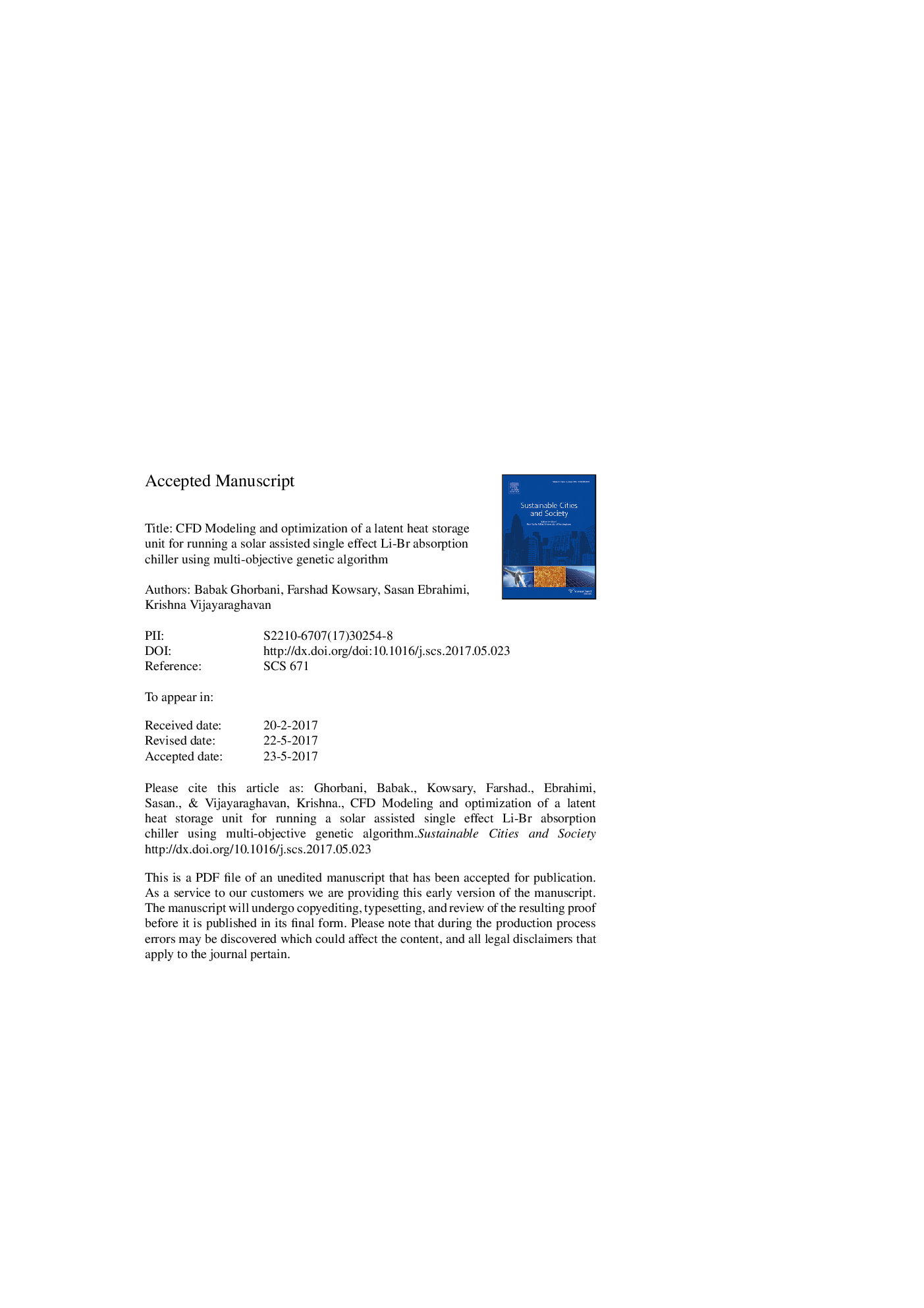| Article ID | Journal | Published Year | Pages | File Type |
|---|---|---|---|---|
| 4928192 | Sustainable Cities and Society | 2017 | 39 Pages |
Abstract
In this paper, the feasibility of a solar absorption refrigeration system to be powered by a latent heat storage (LHS) unit is investigated for a representative building. A single effect absorption chiller, utilizing Li-Br and water as working fluids is thermodynamically simulated. Then, the simulation of the latent heat storage unit is performed by applying finite difference method and the results were validated by the researches in the literature. Then, the geometry of a phase change material (PCM) based LHS system was optimized using multi-objective Genetic Algorithm for simultaneously minimizing the charging time, and maximizing the discharging time. Since the paper considers conflicting objectives, a Pareto front is presented that can be used for obtaining the optimum geometry according to the environmental conditions and working hours of the absorption system. As an illustrative example, the designed heat storage system was shown to be able to drive the 72Â kW generator of an absorption system, for at least 10Â h of operation in the discharging mode with the absence of sunlight. Therefore, it is possible to run absorption chillers under low-load operation conditions using the solar energy if the appropriate storage unit, such as what is introduced here, is used.
Related Topics
Physical Sciences and Engineering
Energy
Renewable Energy, Sustainability and the Environment
Authors
Babak Ghorbani, Farshad Kowsary, Sasan Ebrahimi, Krishna Vijayaraghavan,
